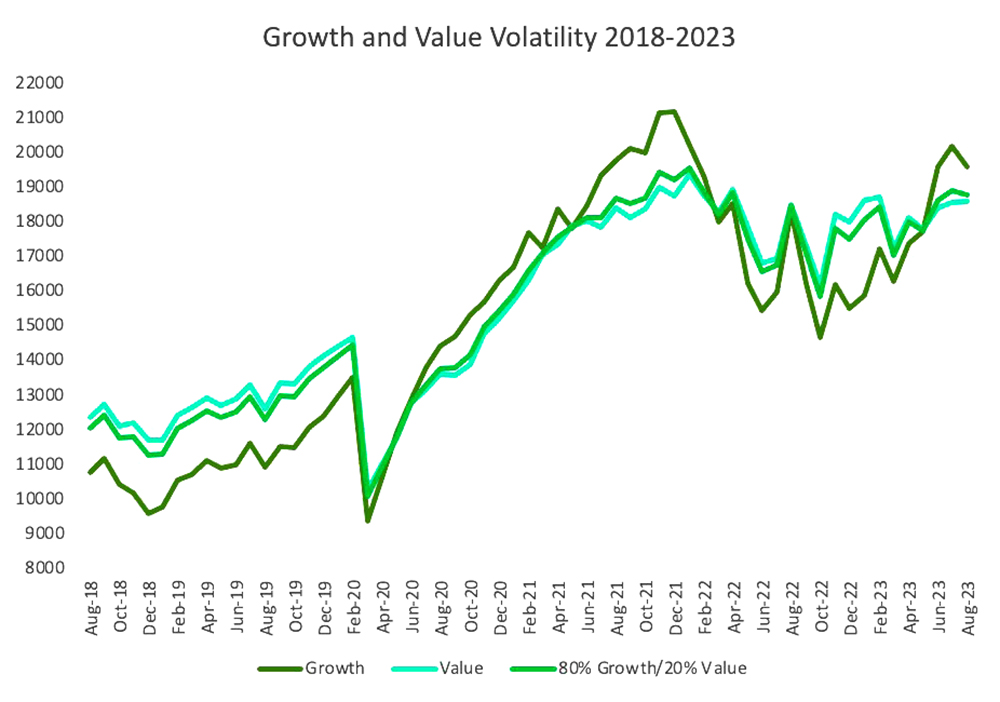SUBSCRIBE
Enter your Name and Email address to get
the newsletter delivered to your inbox.
Please include name of person that directed you to my online newsletter so I can thank them personally.

Tom Meaglia, ChFC®, AEP®,
CLU®, CRPC®, MSFS
Chartered Financial Consultant
Investment Advisor Representative
Chartered Retirement Planning Counselor
CA Insurance Lic. #0567507
Meaglia Financial Consulting
2105 Foothill Blvd., #B140, La Verne, CA 91750
Toll Free: 800-386-3700
Bus: 909-593-6105
Cell: 818-681-8600
Fax: 909-593-6120
Email: tom@meagliafinancialconsulting.com
Website: www.meagliafinancialconsulting.com

The 2022-23 inflation spike and accompanying stock volatility spurred many investors toward high-yield fixed-income investments as risk protection for their portfolios. But with core inflation edging lower and stock volatility more in hand, you may want to look at another investment—value stocks—to diversify* your portfolio further in 2024.
Value stocks are frequently linked to solid, well-established businesses that operate in dependable sectors. Although their development rates may be slower, they are seen as financially reliable and may be undervalued by the market. Growth stocks are often found in sectors with strong growth potential, such as emerging markets, healthcare, or technology. These businesses may have greater volatility because they are frequently in their early phases and reinvesting profits in growth.
What reduces the volatility and risk of value stocks? While their potential for capital appreciation may be moderate, they often offer steady income through dividends. In addition, the issuing company is already established and may have overcome many risks start-up or infant companies face. Meanwhile, growth stocks carry higher risk due to their higher volatility and market expectations.
While they offer the potential for significant capital appreciation, they may also experience greater price fluctuations and have a higher chance of underperforming during market downturns.
*Diversification cannot eliminate the risk of investment losses. Past performance won’t guarantee future results. Investing in stocks or mutual funds can result in a loss of principal.
Source: Wiltshire Growth and Value Total Market Indices, Economic Research Division of the Federal Reserve Bank of St. Louis and LTM Marketing. Note that you cannot invest directly in an index.
Enter your Name and Email address to get
the newsletter delivered to your inbox.
Please include name of person that directed you to my online newsletter so I can thank them personally.
Enter your Name, Email Address and a short message. We'll respond to you as soon as possible.
Thomas Meaglia is an Investment Adviser Representative of Coppell Advisory Solutions LLC, dba, Fusion Capital Management, a registered investment adviser that only conducts business in jurisdictions where it is properly registered, or is excluded or exempted from registration requirements. Registration as an investment adviser is not an endorsement of the firm by securities regulators and does not mean the adviser has achieved a specific level of skill or ability. The firm is not engaged in the practice of law or accounting.
Insurance and annuity products are not sold through Fusion Capital Management. Fusion does not endorse any annuity or insurance product, nor does it guarantee any insurance or annuity performance. Annuity and life insurance guarantees are subject to the claims-paying ability of the issuing insurance company. If you withdraw money from or surrender your contract within a certain time after investing, the insurance company may assess a surrender charge. Withdrawals may be subject to tax penalties and income taxes. Persons selling annuities and other insurance products receive compensation for these transactions. These commissions are separate and distinct from Fusion's investment advisory fees.
Meaglia Financial Consulting and LTM Marketing Solutions, LLC are unrelated companies. This publication was prepared for the publication’s provider by LTM Marketing Solutions, LLC, an unrelated third party. Articles are not written or produced by the named representative.
The information and opinions contained in this web site are obtained from sources believed to be reliable, but their accuracy cannot be guaranteed. The publishers assume no responsibility for errors and omissions or for any damages resulting from the use of the published information. This web site is published with the understanding that it does not render legal, accounting, financial, or other professional advice. Whole or partial reproduction of this web site is forbidden without the written permission of the publisher.